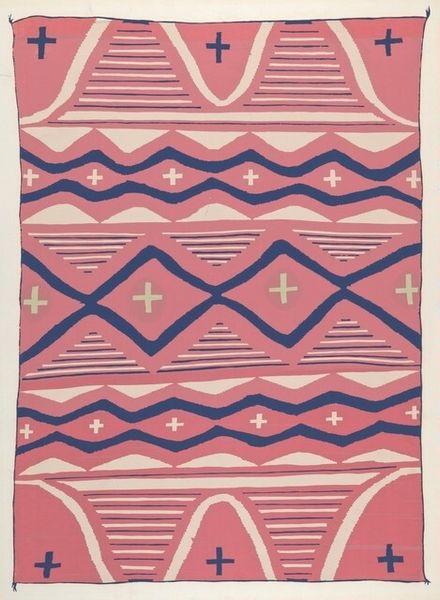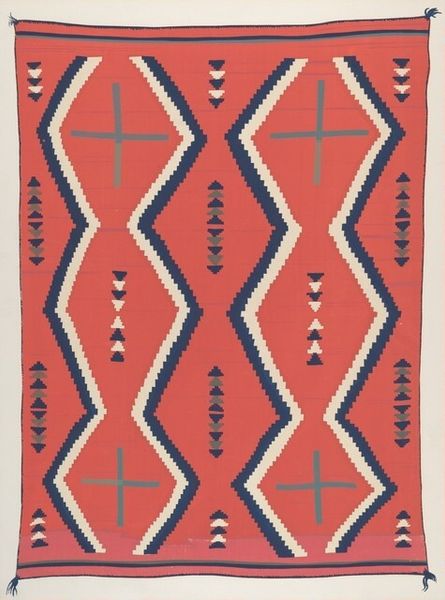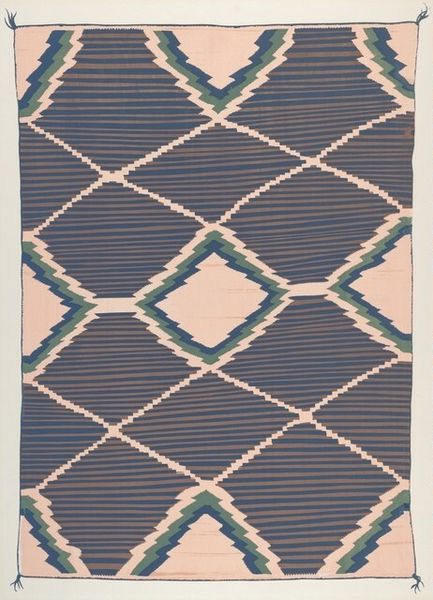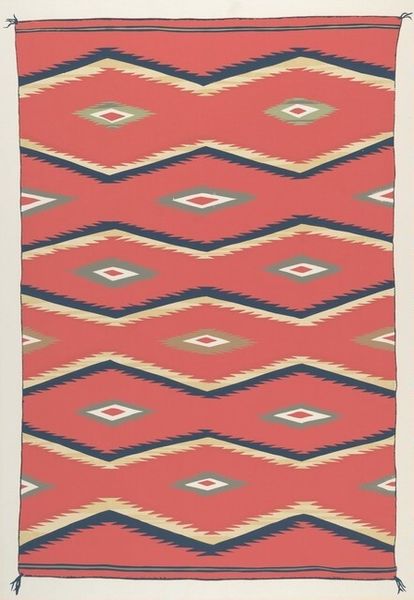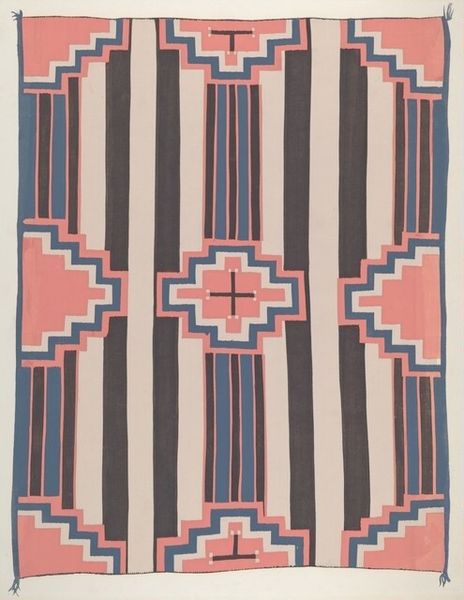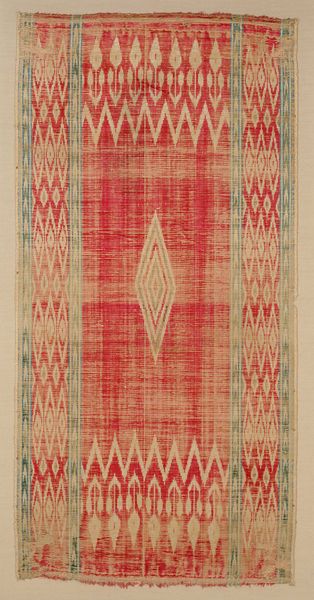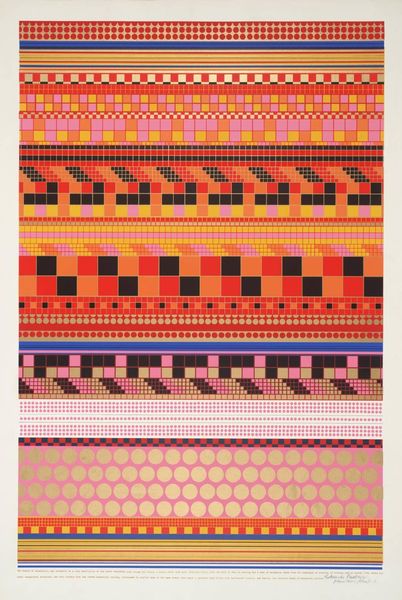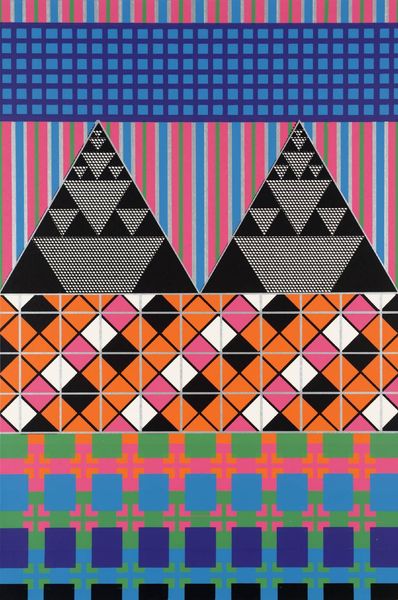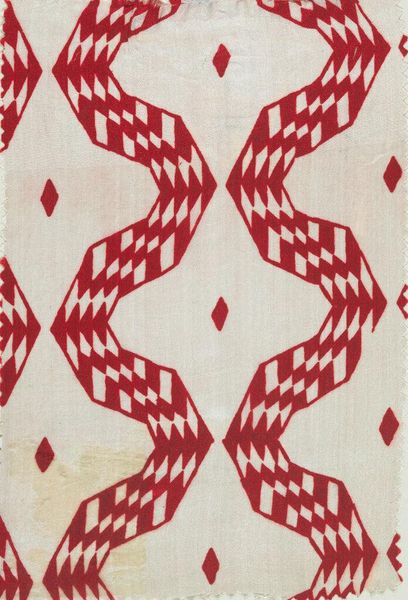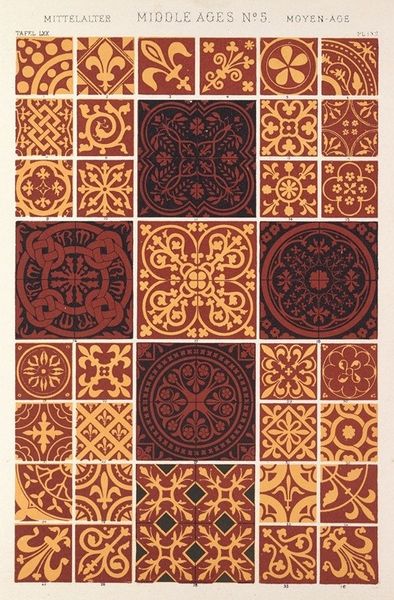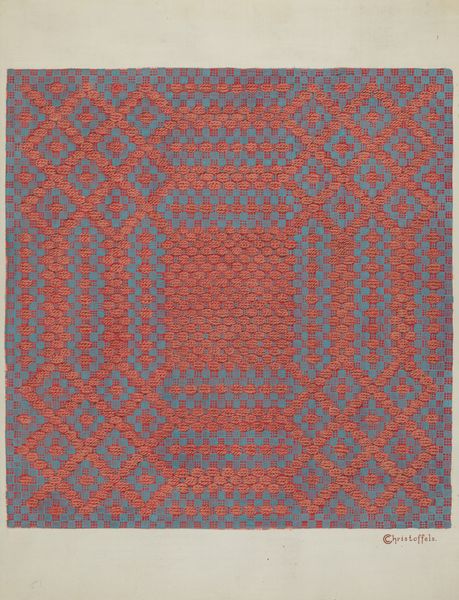
fibre-art, weaving, textile
#
fibre-art
#
weaving
#
textile
#
geometric
#
abstraction
#
textile design
Dimensions: image: 585 x 422 mm sheet: 661 x 507 mm
Copyright: National Gallery of Art: CC0 1.0
Curator: Let’s take a look at "Plate 8," a textile print made by Louie H. Ewing sometime between 1940 and 1943. It’s a striking example of Indigenous American fibre art. Editor: It's unexpectedly vibrant! I’m immediately drawn to the boldness of the coral and the depth of that indigo. There's a real visual punch. It feels meticulously crafted. Curator: Right. Ewing's work engages with abstraction in really interesting ways, and it appears to draw upon established geometric motifs from weaving traditions of the Southwest, especially around Santa Fe. The use of what seem like stacked terraced steps evokes historical and cultural continuity. Editor: It makes you wonder about the labor involved, doesn’t it? Creating something like this, the hands that chose these colors, that guided the fibers… you can see the immense skill and patience woven directly into the piece, quite literally. What kind of access to material would Ewing have had, what restrictions were present at the time it was created? Curator: That's an important point. The work was made during a time when Indigenous art was gaining recognition within the art market, and there was significant focus on maintaining "authenticity.” While it is recognized today in part due to such historic attention, this raises issues around how Indigenous artists were positioned, collected, and exhibited within larger cultural institutions at that time. Editor: Absolutely. I see those diamond shapes containing tightly regimented blue stripes almost as windows – a look through which to better consider this art as labour. The question of ‘authenticity’ that you raise highlights the complexities faced by artists making work during these periods. Curator: I agree. This "Plate 8" acts as more than just an appealing aesthetic. It opens conversations about cultural heritage and the creative process itself. Editor: Exactly, reflecting on the labour and the act of artistic expression through a range of social structures ultimately deepens one's understanding of what is presented before you. Curator: So true; its power lies in its intersections of aesthetics and cultural history. Editor: I am left struck by Ewing’s sophisticated rendering of traditional designs into this striking modern piece.
Comments
No comments
Be the first to comment and join the conversation on the ultimate creative platform.
